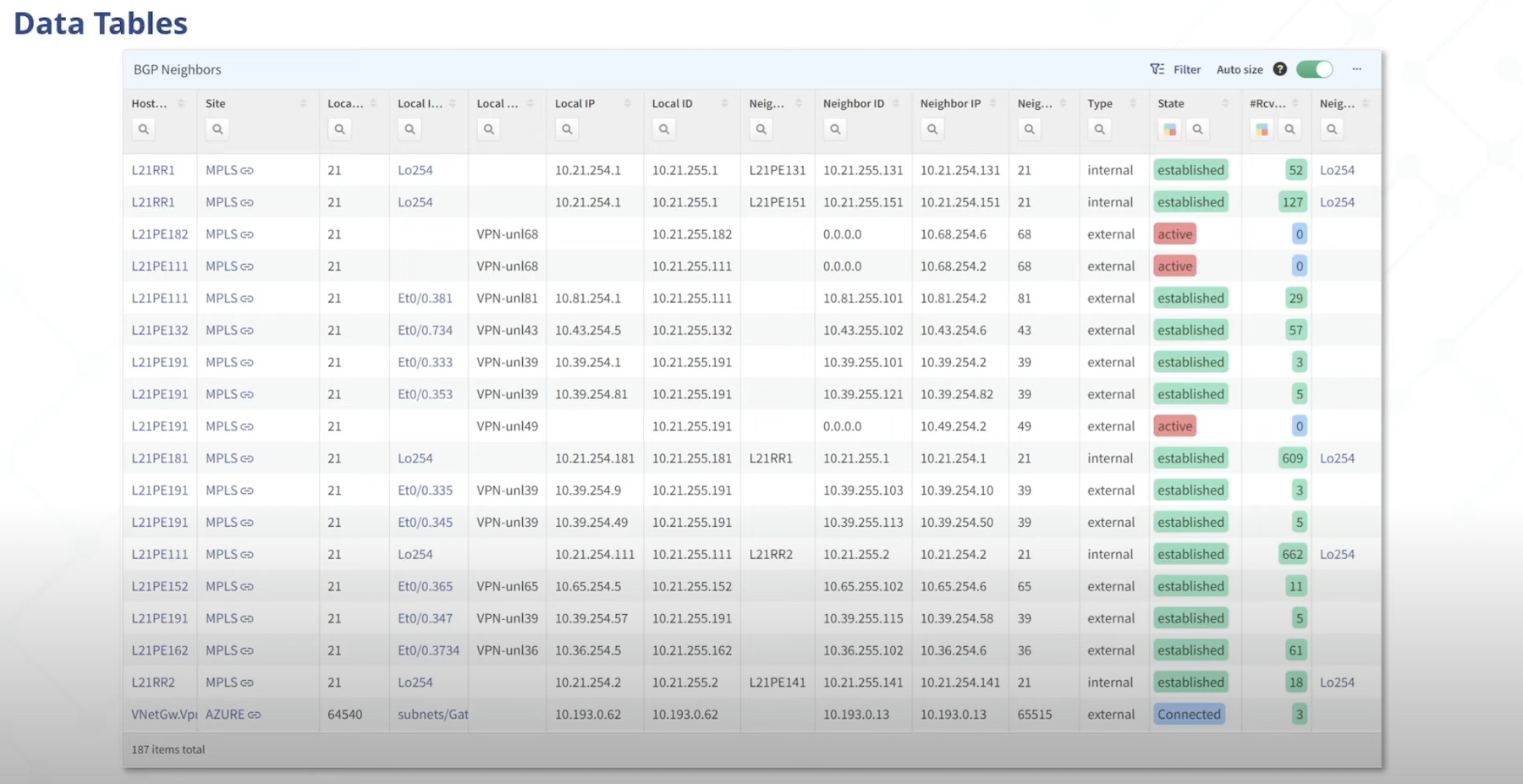Within the long history of technology, the network architecture and topology have changed over and over. Newfangled tools and solutions have continually transformed and expanded the fabric, making it inconceivably dense. Today, the network is not just a medium through which systems communicate and exchange information. It is a living thing with complex characteristics and behaviors.
At Tech Field Day Extra at Cisco Live EMEA 2024, IP Fabric showcased the IP Fabric Automated Network Assurance Platform. Together with the IP Fabric NetBox plugin, the platform demystifies the network and deliver broad visibility in a dynamic topology.
What’s Obscuring Visibility in the Network?
To understand the network wholly, it helps to zoom out and away and gain a suitably distanced view of its entropies and interdependencies. Finding this vantage point has been an ongoing struggle for network operators.
NetOps has to contend with scores of complexities when visualizing large-scale networks. The sources of these complexity lie within the network. Daren Fulwell, Product Evangelist, cited two of the most common factors that feed excessive complexity into modern networks.
Classically, multi-vendor environments, and multi-domain networks host far too many connections, and are, by far, the most complex to understand. “An organization might be using a combination of different vendors in different parts of the network in order to deliver a service,” he said. It takes multiple applications and services to come together and connect via a host of different routes for a service to be rendered to the end users.
“What are network folks trying to do but to make sure that the application services and the business functions that need those services, are able to continue? It’s about availability of it services.”
The Usual Ways of Dealing with Observability
The teams fall back on a variety of options to achieve a consistent view of the network. They plug in a number of monitoring platforms that stream intelligence from deep within the network. Network documentation is another popular source of information. For more targeted visibility, network engineers rely on querying devices to get specific information out of problem devices. Anything that is missing is made up for with experience and expertise.
The biggest problem with this approach is that scraps of information do not amount to a full picture. “Nobody actually has the full knowledge and understanding of all the parts of the network, and definitely not the expertise in all technologies either,” Fulwell reminded.
The methodology has several holes in it. For one, as great as monitoring tools are in gathering point-in-time information, their lack of context, a necessary piece of root cause analysis (RCA), renders them unhelpful.
For ages, documentations have been seen as reliable sources of information, but in a rapidly changing landscape, they aren’t the most updated data. The information is frequently outdated, and imprecise a lot of the times.
Lastly, the technique of querying devices in the cloud era is plain inefficient, considering the sheer number of devices in the network, and that no one person knows how all the cloud networks work.
Total Observability with IP Fabric and NetBox
The IP Fabric Automated Network Assurance Platform transforms this daunting process into a default function. IP Fabric follows a pyramid pattern of gathering intelligence. At the base is raw data. This is topped by information, and at the apex is knowledge. Data is made to pass through several layers of filtration to flesh out intelligence and insights.
The process begins with gaining a holistic understanding of the network inventory, and how the pieces interact. The IP Fabric platform discovers network assets and pulls configuration and state data device-by-device. This data is distilled down to reveal the details about the interconnections and interactions.
“It’s about saying this part of the network is interacting with that part of the network, whether it’s sharing routing information, or whether there’s a policy that’s forcing traffic a certain way. To understand those traffic flows, we need to understand those relationships,” Fulwell added.

IP Fabric drills down on two key metrics to turn information into knowledge – network behavior and path lookup. “We need to understand the network behavior in order to deliver applications successfully. So in IP Fabric’s terms, what that means is, we can look at the behavior and measure it because we have the data. We understand what a switch, router, firewall, or load balancer does when we plug it into the application traffic. We can understand what that path is going to be, whether it’s going to be successful or if it’s going to fail, and where.”
It is tricky getting such fine-grained details in a network that is changing every second. IP Fabric’s platform accounts for all changes – planned and unplanned – by creating snapshots which tell the exact network state at any point-in-time. By comparing these snapshots, operators can get a complete inventory of everything that’s changed between then and now.
The platform also provides thresholds for all elements to flag the good and the bad. Out-of-the-box, the solution comes with 120 intent checks which separate the good and the bad elements based on best practices and intents.
Fulwell stated that the key API usage for the IP Fabric platform is network automation. “You can use API calls to make sure that you’re getting the right observed state data, to trigger snapshots, to validate changes and so on,” he elaborated.
With the NetBox plugin which is a solution for modeling and documenting networks, users can have amplified daily visibility of the network. When data coming from both the IP Fabric’s platform and NetBox are synced, it gets much easier to tell if all intended states match the observed ones. In client networks, NetBox serves as the one source-of-truth, whereas IP Fabric augments the information by layering in granular details.
For more information, be sure to watch IP Fabric and NetBox’s joint presentation from the recent Tech Field Day Extra at Cisco Live EMEA 2024.

